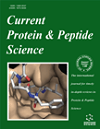
Full text loading...
We use cookies to track usage and preferences.I Understand
The three-dimensional structure of proteins, achieved through the folding of the nascent polypeptide chain in vivo, is largely facilitated by molecular chaperones, which are crucial for determining protein functionality. In addition to aiding in the folding process, chaperones target misfolded proteins for degradation, acting as a quality control system within the cell. Defective protein folding has been implicated in a wide range of clinical conditions, including neurodegenerative and metabolic disorders. It is now well understood that the pathogenesis of neurodegenerative diseases such as Parkinson's disease, Alzheimer's disease, Huntington's disease, Amyotrophic Lateral Sclerosis, and Creutzfeldt-Jakob disease shares a common mechanism: the accumulation of misfolded proteins, which aggregate and become toxic to cells. Among the family of molecular chaperones, Heat Shock Proteins (HSPs) are highly expressed in response to cellular stress and play a pivotal role in preventing protein aggregation. Specific chaperones, particularly HSPs, are now recognized as critical in halting the accumulation and aggregation of misfolded proteins in these conditions. Consequently, these chaperones are increasingly considered promising pharmacological targets for the treatment of protein aggregation-related diseases. This review highlights research exploring the potential roles of specific molecular chaperones in disorders characterized by the accumulation of misfolded proteins.

Article metrics loading...

Full text loading...
References


Data & Media loading...

